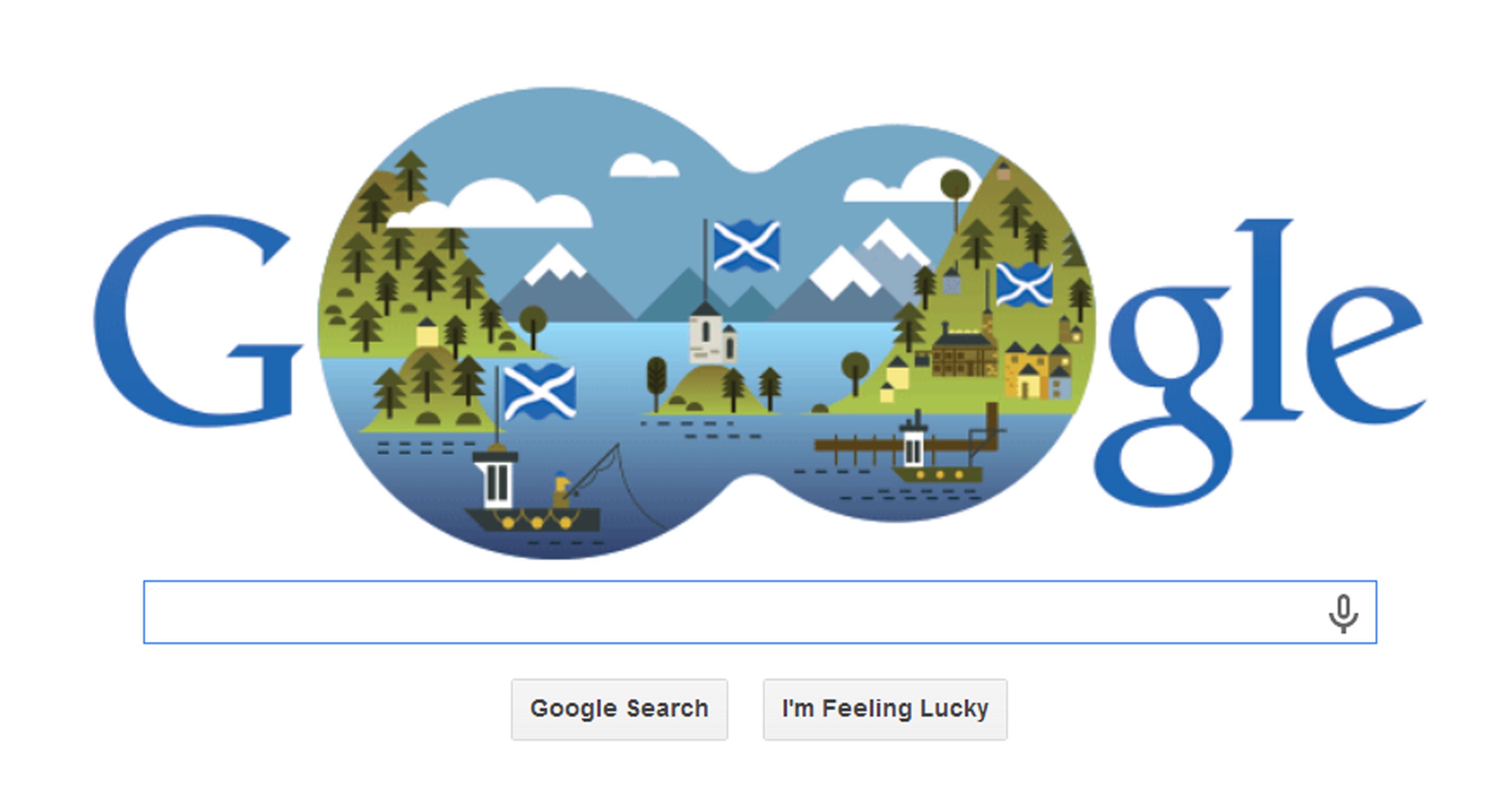St Andrew's Day: Google Doodle marks Scotland's national day with fluttering Saltires
The middle part of the search engine's logo has been replaced with a Scottish scene showing a loch, a fisherman and various landmark structures

Your support helps us to tell the story
From reproductive rights to climate change to Big Tech, The Independent is on the ground when the story is developing. Whether it's investigating the financials of Elon Musk's pro-Trump PAC or producing our latest documentary, 'The A Word', which shines a light on the American women fighting for reproductive rights, we know how important it is to parse out the facts from the messaging.
At such a critical moment in US history, we need reporters on the ground. Your donation allows us to keep sending journalists to speak to both sides of the story.
The Independent is trusted by Americans across the entire political spectrum. And unlike many other quality news outlets, we choose not to lock Americans out of our reporting and analysis with paywalls. We believe quality journalism should be available to everyone, paid for by those who can afford it.
Your support makes all the difference.Google has marked Scotland's national day, St Andrew's day, with an Saltire-strewn animated doodle.
The middle part of the search engine's logo has been replaced with a Scottish scene showing a loch a fisherman and various landmark structures.
The image also features three fluttering Saltires blowing in the wind.
St Andrew, who was a fisherman and one of Jesus’ disciples, is credited with preaching the word of God across Greece and Asia Minor during the 1st century.
He was killed by Romans in the Greek city of Patras. He is said to have been crucified on an X-shaped cross, which would later become the Saltire symbol found in Scotland's flag.
St Andrew is also the patron saint of singers, spinsters, maidens, old maids, fishmongers and women seeking to become mothers.
Although mostly associated with Scotland St Andrew is also the patron saint of Romania, Russia, Ukraine and Greece. According to legend an angel supposedly told the Greek monk St Rule to take St Andrew's remains to the "ends of the earth".
Removing a tooth, arm, bone, knee cap and some fingers the monk left for Scotland. He was, however, shipwrecked off the east coast where he built a chapel to house the relics.
The settlement later became known as St Andrews.
St Andrew's day is celebrated on the 30th November, and although it is a very old tradition - with national festivals dating back to the reign of Malcolm III (1034 - 1093) - it is only in recent times that the date was given the status of a national holiday.
St Andrew's Day was first celebrated as an official bank holiday in Scotland in 2006.
The day is also marked in Barbados in celebration of the country's independence.
The celebration of St Andrew's day marks the beginning of the Scottish winter festivals. The celebrations culminate with Burns Night on January 25th.
Google has marked St Andrew's day with a doodle since 2010.
Join our commenting forum
Join thought-provoking conversations, follow other Independent readers and see their replies
0Comments